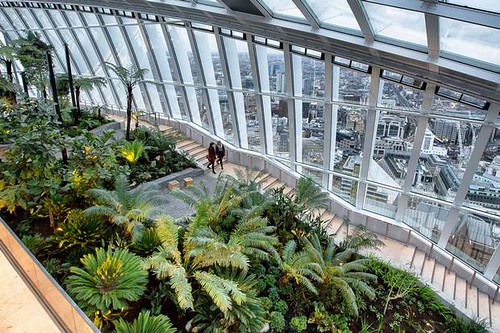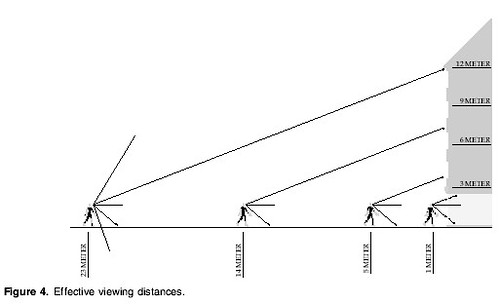The UK's leading architecture publication has an annual award for the worst designed building
Building Design, one of UK's leading architecture and construction trade journals, calls attention to the nation's worst new buildings, in its annual "Carbuncle Cup," based on nominations from readers. From the article:
Sadly mediocre architecture is rife in our towns and cities with too many new buildings blighting rather than improving the built environment. These buildings suffer from a number of failings including blank, faceless facades, cheap shouty cladding, bad proportions and ill-conceived design “features”. Frequently examples of gross overdevelopment, rather than mitigating their impact, too many of these buildings stick two fingers up to their context.Can't see an equivalent "award" being handed out annually by Architectural Record, Metropolis, or other similar US publications.
 Of the list of the six worst buildings for 2015, London's Walkie Talkie building, designed by Rafael Viñoly, got the nod ("It should never have been built," BD; "Carbuncle Cup: Walkie Talkie wins prize for worst building of the year," Guardian).
Of the list of the six worst buildings for 2015, London's Walkie Talkie building, designed by Rafael Viñoly, got the nod ("It should never have been built," BD; "Carbuncle Cup: Walkie Talkie wins prize for worst building of the year," Guardian).A few months ago I wrote about an element of the building that I found interesting ("Public access to building tops in the vertical city: cinemas, parks, and plazas"), an upper story garden and viewing area (with restaurants, one with stratospheric prices) ostensibly open to the public. even if in practice the garden is not well executed and the quality of public access and the experience is stunted.

Sky Garden at the top of the "Walkie Talkie" building, London. Photo by Alex Lentati, for the London Evening Standard.
From a post-modern architecture perspective, the design of the Walkie Talkie building is reasonable and playful, even if elements of the design ended up concentrating the sun in ways that melted car parts and blistered the paint off nearby storefronts. Awnings had to be added to de-concentrate the sun rays that would otherwise bounce off the building.
The problem is that the building is the definition of the term "context insensitive."
It was built in an area not otherwise zoned for skyscrapers. In a triumph of capitalism, the reason the building gets wider as it rises is because rents/s.f. increase significantly on the higher floors.
Therefore, it will always stick out, more as sculpture than as a building, and it will always tower over its much much shorter neighboring buildings.
Peter Rees, the former chief planner of "The City," London's square mile financial district, justifies the building as acting as "the prow" of "The City" conceptualized as a ship.
But in practice from the perspective of being on the street rather than from an aerial view, it's not possible to grasp the complete landscape of "The City" in a single glance and therefore, the building doesn't function as an element in a perfectly formed cultural landscape that fully executes and illustrates the idea of "The City" as a ship.

Effective viewing distances for pedestrians. From "Close encounters with buildings" by Jan Gehl, Lotte Johansen Kaefer and Solvejg Reigstad. Urban Design International 11: 29-47;
Labels: architecture, civic architecture, urban design/placemaking



9 Comments:
The city of London skyline is exactly why I don't want the height limit changed.
In term of public spaces, I went to NYC a few weeks ago and noticed how smart Trump is in using the public space requirements to build a bit higher. The Trump Tower space looks as new as when I first saw it in 1987, although I think they are suffering a bit with tenants (Gucci baby?)
The new building proposed in rosslyn has a similar viewing area. And allegedly the Empire State building makes more money off the visitors than the rent.
there was an article in the times a few weeks back about how Trump is misusing for retail some of the space that is supposed to be public.
I understand the point about the height limit and viewshed. I just don't see how we can raise money for transit expansion otherwise.
Then again, not likely that our elected officials will push transit expansion in my lifetime anyway.
DC could use high buildings in some areas but not all over the central city area. As for London- I think that they are smart to keep most of these Dubai looking monsters away from the really truly historic areas- they are mostly around Docklands and on the east side which had sort of ghetto conditions up until recent years- so in many ways it is a big improvement for this part of London. I could see allowing high buildings over in Anacostia and also outside the Florida avenue confines of the original old DC city area. I for one would prefer that if higher structures are permitted in DC they not insist upon flat rooftops and give us a better variety for our skyline. And I do not want to see junky trendy crap like Frank Geary style nonsense visually polluting DC's skyline either- allowing starchitects to mess up DC is a huge mistake and I think that the conservatives like Cmmttee 100 sort of have a point if they are trying to keep these scum at bay. We need spires, domes, minarettes, pyramids and turrets not abstract forms that look like some sort of junkyard. The flat rooftops are already way too ugly and need to be reconsidered. It wouldn't hurt DC if these flat tops went up 10 more stories.
a contributor on another thread dinged me when I compared WMATA to TfL. He said London is London and DC is nothing like it.
Anyway, there isn't demand for tall buildings outside of the core. To be able to get loans to build there has to be demand. The reason that tall buildings have a market despite the higher cost to build and to rent and the higher cost of land is because of the demand.
well, there is certainly demand for tall buildings in places like Tysons and other edge cities- so if this is the case- why wouldn't there be demand for tall buildings in DC outside of the core? Again- the problems I see with raising the height limit have little to do with actually doing it- but are aesthetic- and we need serious controls to keep riff raff scum from building ugly looking garbage we will have to live with here. Sort of the same with the pop-up situation- ordinarily I am in favor of adding capacity , density, enlarging dwellings- but they have shitty builders with zero aesthetics putting up monstrosities. Then you get these morons who say we cannot have aesthetic controls because taste is "all relative" or "subjective" which is absurd. I would be all for higher buildings provided they look as nice as the Metropolitan Life Building or Philly's City hall- but no- we will get shit if this happens here.
RE: Trump and public space, yes I saw that as well.
He did a small to midsize booth -- maybe 30 feet long -- selling the brand.
But what impressed me what how well kept the area was, despite the obvious signs that they are having problems renting retails (the Trump Bar and Trump Grill are just examples).
The debt limits on DC are not self imposed. Congress could raise them, abolish them, or as usual for large transit projects pay for a good chunk of it.
too bad Drumph [ Trump's real German name ] is such a loose cannon- because his efforts at the Old Post Office building are going to be really good- and if anyone can make that edifice work and turn a profit it is Drumph [ Trump]. This aspect of his success should not be overlooked or laughed at. Again- if new tall buildings such as the Old Post Office could be built in DC I would not protest. But I seriously doubt the abilities and the taste of modernists who control our architecture business - they are more likely to do serious harm to our skyline than improve upon it.
we certainly do NOT want a walkie - talkie style of abomination ruining DC's skyline- and some fool might actually try to do this down the road unless people are vigilant. For this reason your boy Charles is spot on in this discussion. And yet within the parameters of traditional architecture there is a huge variety of possibilities- not at all exhausted by any means- that could result in a lovely skyline of higher buildings here in DC if only the modernistas would relent and open hearts and minds to real permanent and visually sustainable creations we can all live with.
Too bad that you can't say the same of Trump's newly constructed buildings...
wrt Tysons, Tysons (and Reston) is to Fairfax/NoVA as Downtown is to DC.
There isn't demand to build such buildings in Vienna or in Hybla Valley, just like there isn't to do so in Anacostia or on Upper Georgia Ave.
Post a Comment
<< Home